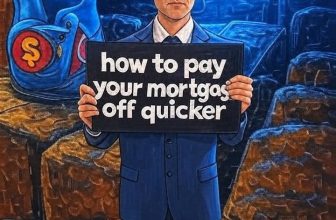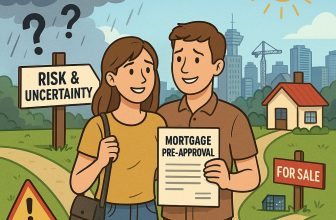(November 14, 2021)
Intro (pre-amble): up to 9:30 mark of podcast (Subprime Mortgages still around? | Canada + population density = Bahamas | BC is Canada’s destination)
Many people consider subprime mortgages to be a thing of the past. A mortgage market-segment that was more formally introduced during the explosive real estate market of the late-90s/early-2000’s began to take shape and materialize throughout the bustling markets across the US. Canadians heard about subprime mortgages and all the compelling stories of how unlikely applicants were able to qualify for a mortgage, and before you knew it the wave reached Canadian borders and began its surge into the Canadian real estate market, aswell. Thankfully unlike our American friends, Canada didn’t succumb to a subprime-mortgage lead economic tailspin (watch The Big Short for a detailed explanation) as it didn’t allow the NINJA style mortgage (no-Income/no-Job/no-Asset) to incubate long enough to gather any real significant momentum. As Canadians have since become accustomed to, the government in power at the time stepped in with a protect-us-from-ourselves type of legislation to upgrade the qualification criteria for sub-prime lending – essentially, they eliminated the NINJA style mortgages. This upgrade in qualification criteria proved to be enough to save the Canadian real estate market and financial system from damage (as was conversely not the case in the US). The Canadian subprime mortgage community survived and even so continued on a strong and healthy growth trajectory. The subprime mortgage space has since been through a rebranding and has maintained its niche position in Canada’s real estate and mortgage market. The industry is now referred to as “Alternative Lending” and continues to offer solutions to applicants who can’t quite fit the rigid qualifying criteria of triple-A lending.
Here is a summary outline of the key qualification criteria for Alternative Lending mortgages in Canada (formerly known as subprime mortgages):
- minimum down payment of 20% is required
- debt servicing ratios are as much as 35% higher than triple-A lenders (this means applicants can qualify for more mortgage)
- income qualification criteria is far less demanding than triple-A lender qualification guidelines
- very flexible to applicants who have a weak/damaged credit history
- accommodating to newly established self employed applicants
- higher rates, shorter tems…”band-aid” or “transitory” mortgages
- expect a fee of 1-2% on the full mortgage balance
The Alternative Lending mortgage arena does not necessarily lead to a slam dunk mortgage approval, but rather a pathway to more lenient lenders who are more flexible and rational in their adjudication. That flexibility and rationality is directly priced into the mortgage itself through a higher interest rate and associated fee. Therefore, it is important to approach this pathway with a realistic expectation – expect a higher interest rate and prepare to potentially pay out-of-pocket for a lender and/or broker fee. The key to being at peace with a higher interest rate mortgage is to focus on the monthly payment and your ability to maintain it. For example, a $500,000 mortgage priced competitively from a triple-A lender at 2.74% will equate to a monthly payment of $2,300. With an Alternative Lender, that same $500,000 mortgage will amount to a monthly payment of $2,400 with a 2 year fixed rate of 3.14%. At the end of the day, for many that embark on the Alternative Lending pathway, a $100/month differential is a small premium to pay in exchange for home ownership at a time where prices continue to remain elevated and show no real signs of significantly correcting. The true essence of alternative lending is to award mortgages to applicants that have proven their ability to “make good” on payments based on unconventional and common sense qualification criteria.
Here are some examples of common sense qualification:
- rather than requiring a recent pay stub and employment letter, an alternative lender may simply request 3 months worth of bank statements to verify income deposits into your bank account
- in triple-A lending, self employed applicants require a minimum tenure of 2 years, but an Alternative Lender will consider newly established self employed applicants with a history of only 3 months
- Alternative lenders are also more forgiving to applicants who have recently come out of bankruptcies. Triple-A lenders will decline applicants associated with a prior bankruptcy for up to two years after the bankruptcy has been discharged, whereas an Alternative Lender will consider applicants 1 day after their bankruptcy (or collection) has been discharged
Contact Marko, he’s a Mortgage Broker!
604-800-9593 direct Vancouver (Click Here to schedule a call with Marko!)
403-606-3751 direct Calgary (Click Here to schedule a call with Marko!)
@markogelo (Twitter)
MarkoMusic (SoundCloud Account)…all podcast music tracks are performed and produced by Marko





